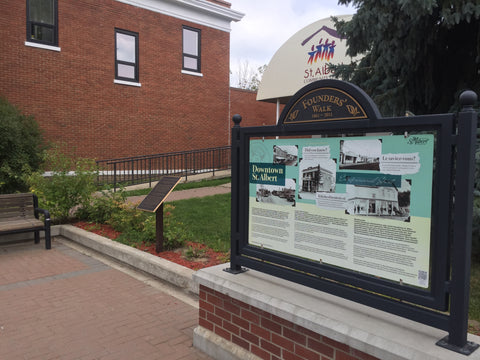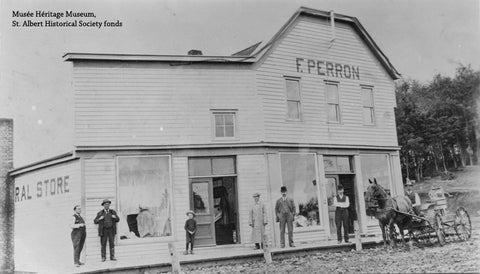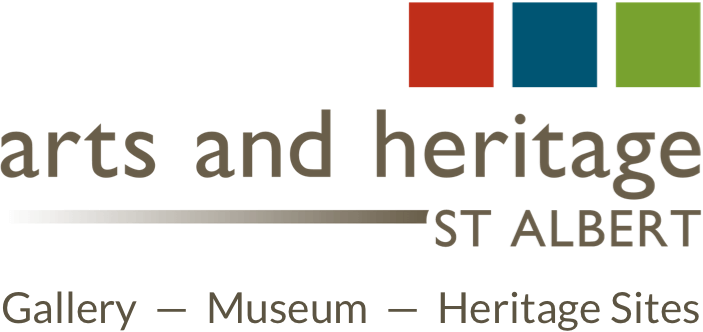


ONLINE EXHIBITION
4. Downtown St. Albert
Downtown St. Albert
The beginning of the 20th century saw the rapid development of St. Albert. Due in large part to the influx of French-speaking settlers in the late 1800s, St. Albert grew from a mission to a village in 1900, and a town in 1904. In May 1908, town council purchased a full-page advertisement in the Edmonton Bulletin to promote St. Albert as a “… rich farming district with wonderful possibilities of a bright and prosperous future.”1
Ever since Father Lacombe built the bridge in 1862, linking the Mission to Fort Edmonton, Perron Street has been very important to the development of St. Albert. It was originally called Piron Street in honour of France’s Piron family, which had donated the bells for the St. Albert Mission. In 1967, it was renamed for Fleuri Perron, an early francophone businessman, councillor and mayor.
In 1912, the Chamber of Commerce was created to promote commercial development in the community. That same year, the Québec-based Banque d’Hochelaga opened on the west side of Perron Street. In 1920, a new bank building was constructed on the south-east corner of St. Anne and Perron, using the bricks from the Royal Hotel, which had been on that site. Over the years the building has housed a restaurant, a Bank of Montréal, shops and a public art gallery.
Prior to the First World War, St. Albert’s downtown core included a bank, hotels, general stores, farm implement dealers, a blacksmith, liveries, a drugstore, a butcher shop, a clothing store and restaurants.
1 Arlene Borgstede, The Black Robe’s Vision: a history of St. Albert & district, Volume 1 (St. Albert Historic Society, 1985), 322-323.
Le Centre-Ville de St-Albert
St-Albert s’est rapidement développé au XXème siècle : d’une mission à un village en 1900 et à une ville en 1904, en grande partie à cause de l’arrivée de pionniers de langue française à la fin du XIXème siècle. En mai 1908, le conseil municipal fit paraître une annonce d’une page complète dans le Edmonton Bulletin qui fit la promotion de St-Albert comme d’un « … district agricole riche avec de merveilleuses possibilités pour un avenir brillant et prospère. »2
La rue Perron a toujours revêtu une grande importance pour le développement de St-Albert, depuis la construction du pont reliant la Mission au Fort Edmonton en 1862. À l’origine, la rue Perron portait le nom de rue Piron, en l’honneur de la famille Piron de France, qui fit don des cloches à la Mission. En 1967, elle prit le nom de rue Perron, en l’honneur de Fleuri Perron, un homme d’affaires francophone du début du siècle qui fut aussi conseiller municipal et maire.
En 1912, la Chambre de Commerce fut créée pour promouvoir le développement commercial dans la communauté. Cette même année la Banque d’Hochelaga débuta ses activités à un emplacement situé sur le côté ouest de la rue Perron. En 1920, un nouveau bâtiment fut construit au coin sud-est de Ste-Anne et Perron, avec les briques du Royal Hotel qui existait à cet endroit auparavant. D’années en années, le bâtiment hébergea un restaurant, une succursale de la Banque de Montréal, des magasins et une galerie d’art publique.
Durant les années avant la Première Guerre mondiale, le centre-ville de St-Albert offrait une variété de services: une banque, des hôtels, des magasins généraux, des concessionnaires de machinerie agricole, une forge, des écuries de louage, une pharmacie, une boucherie, un commerce de vêtements et des restaurants.
2 Traduit de Arlene Borgstede, The Black Robe’s Vision: a history of St. Albert & district, Volume 1 (St. Albert Historic Society, 1985), 322-323.
Mekwâhotenâhk
Ewakôma kâmâcipayik mitâtahtomitanaw askiy mistahi kîpeyahkîmon St. Albert, ayamihewînînâhk ohci, piyisk cipahaskanis 1900 ekwa ôcenâs 1904. Owemistikosiwak epetawahitocik Quebec ohci, ekwa ayisiyiniwak Kihcimôhkomâninâhk ohci, ekwa Akâmaskîhk nânitaw 1800. Mihcet St. Albert osihcikewina ekota ehohcîmakahki. Opiniyawewowipîsim ehakimiht 1908, ôtenâwîniwak ekîhâcimikâtek St. Albert ôtenâhk Amiskwacîwâskahikan masinahikanihk Edmonton Bulletin ehisiyihkâtek. Omisi ehitastek, “Mistahi wiyotisiwaskiy metoni tamiyopayik ôte nîkânihk tamiyoyâhk tamiyopimâcihok.”
Ispî ohci Father Lacombe kâkîhosihtât âsokan 1862, kîtahkopitam ayamihewînînâhk St. Albert ekwa oskac Amiskwacîwâskahikan isihcikewin ôcenâs ôta St. Albert. Oskac Piron Street ekîhisiyihkâtek wemistikosiwak Pirons ekîmekicik sewiyâkana ayamihewînînâhk isi. 1967 ehispayik kîhâciwihowiniwan Fleuri Perron ohci, owemistikosiw, isihcikew ekwa okimahkân.
1912 Chamber of Commerce kîhosîhcikâtew kayahkinamik isihcikewin ekwa tohpikihtâhk ôcenâs kewaskam kîyohtenikâtew pahkisimotâhk Perron Street ohci, Banque d’Hochelaga ehisiyihkâtek, Quebec ohci. 1920 kîhosîhcikâtew oskikamik âpihtâkîsikanohk ekwa sâkâstenohk St. Anne ekwa Perron ohci, ehâpacihîcik asiniyak ita Royal Hotel kâkîcimatek. Mihcetwâskiy ôma aspin ohci, ekota kîhayâwa mîcisowikamik, sônîyâwikamik Montreal ohci, acâwewikamikosa, ekwa otâpasinewikamik.
Pâmayes nistam nôtinitowin First World War St. Albert kîhastewa sônîyâwikamik, nipâwikamikwa, atâwewikamikwa, kistikew âpacihcikana otatâwâkew, mistatimowaskisinokamik, mistatimokamikwa, maskihkîwikamik, mâcîwikamik, ayiwinisiwikamik, ekwa mîcisowikamikwa.




